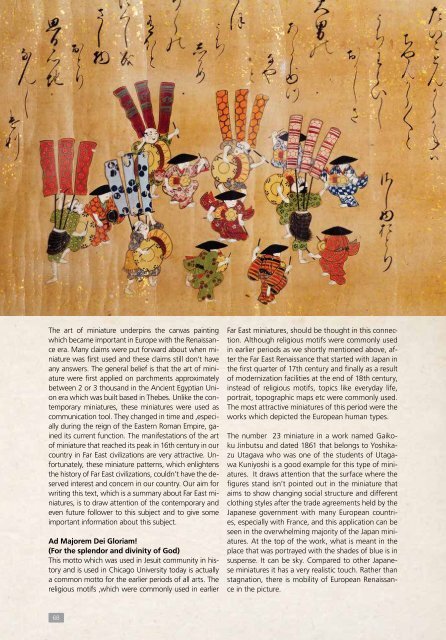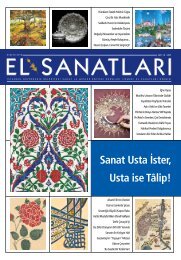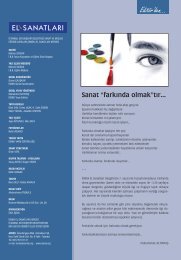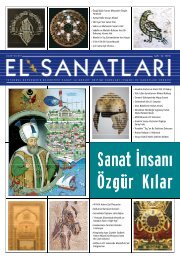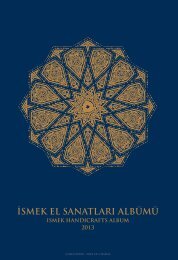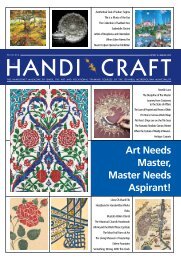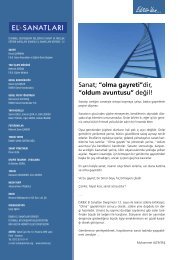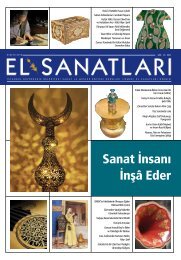Create successful ePaper yourself
Turn your PDF publications into a flip-book with our unique Google optimized e-Paper software.
The art of miniature underpins the canvas paintingwhich became important in Europe with the Renaissanceera. Many claims were put forward about when miniaturewas first used and these claims still don’t haveany answers. The general belief is that the art of miniaturewere first applied on parchments approximatelybetween 2 or 3 thousand in the Ancient Egyptian Unionera which was built based in Thebes. Unlike the contemporaryminiatures, these miniatures were used ascommunication tool. They changed in time and ,especiallyduring the reign of the Eastern Roman Empire, gainedits current function. The manifestations of the artof miniature that reached its peak in 16th century in ourcountry in Far East civilizations are very attractive. Unfortunately,these miniature patterns, which enlightensthe history of Far East civilizations, couldn’t have the deservedinterest and concern in our country. Our aim forwriting this text, which is a summary about Far East miniatures,is to draw attention of the contemporary andeven future follower to this subject and to give someimportant information about this subject.Ad Majorem Dei Gloriam!(For the splendor and divinity of God)This motto which was used in Jesuit community in historyand is used in Chicago University today is actuallya common motto for the earlier periods of all arts. Thereligious motifs ,which were commonly used in earlierFar East miniatures, should be thought in this connection.Although religious motifs were commonly usedin earlier periods as we shortly mentioned above, afterthe Far East Renaissance that started with Japan inthe first quarter of 17th century and finally as a resultof modernization facilities at the end of 18th century,instead of religious motifs, topics like everyday life,portrait, topographic maps etc were commonly used.The most attractive miniatures of this period were theworks which depicted the European human types.The number 23 miniature in a work named GaikokuJinbutsu and dated 1861 that belongs to YoshikazuUtagava who was one of the students of UtagawaKuniyoshi is a good example for this type of miniatures.It draws attention that the surface where thefigures stand isn’t pointed out in the miniature thataims to show changing social structure and differentclothing styles after the trade agreements held by theJapanese government with many European countries,especially with France, and this application can beseen in the overwhelming majority of the Japan miniatures.At the top of the work, what is meant in theplace that was portrayed with the shades of blue is insuspense. It can be sky. Compared to other Japaneseminiatures it has a very realistic touch. Rather thanstagnation, there is mobility of European Renaissancein the picture.68


